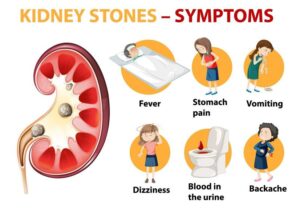The prostate gland is an important part of the male reproductive system. It is walnut-shaped and located just below the bladder. Its main function is to make a portion of semen, which contains fluid that nourishes and protects sperm.
The fluid secreted by the prostate gland helps sperm to be more mobile and survive. The urethra, which carries both urine and semen out of the body, passes through the prostate gland. As men age, the prostate gland can increase in size, causing urinary problems, such as difficulty urinating or frequent urination.
The prostate gland produces the fluid that carries sperm during ejaculation.
The prostate gland produces a protein called prostate-specific antigen (PSA).
In young men, the prostate is walnut-shaped.
The size of the prostate increases as men age.
The prostate weighs about 20 to 25 grams in healthy adult men.
Prostatitis is a condition of infection, inflammation, and pain in the prostate gland.
There are a few types of prostatitis, such as acute and chronic bacterial prostatitis and chronic pelvic pain syndrome (CPPS).
Acute prostatitis is a medical emergency.
Problems with the prostate gland can cause different symptoms, depending on how severe the problem is. Here are some common symptoms of a prostate gland problem:
- Urinary problems:
- Difficulty urinating
- Weak or slow urine stream
- Frequent urination, especially at night
- Pain or burning during urination
- Feeling that the bladder is not completely empty
- Blood in the urine:
- Blood in the urine or semen (this can sometimes be a sign of prostate cancer or other serious problems)
- Pain in the lower back, pelvis, or thighs
- Problems with ejaculation:**
- Painful ejaculation
- Feeling uncomfortable during or after sex
- Erectile dysfunction:
- Problems with erection, such as difficulty getting or keeping an erection
- Smelly or unusual color of urine:
- Smelly, dark, or cloudy urine can also be a sign of prostate problems.
If any of these symptoms appear, it is important to consult a doctor. Prostate problems can include prostatitis (inflammation of the prostate gland), benign prostatic hyperplasia (BPH) (enlargement of the prostate), and prostate cancer
Treatment of prostate gland problems
Prostate gland problems can have several treatment methods, depending on how severe the problem is and what conditions are present, such as prostatitis (inflammation), benign prostatic hyperplasia (BPH), or prostate cancer. Here are some of the major treatments and remedies:
- Lifestyle changes:
- Limit intake of fluids:** Do not take too much liquid especially at night, which can reduce the problem of frequent urination.
- Reduce caffeine and alcohol intake:** These can stimulate the bladder and aggravate urinary problems.
- Exercise: Regular exercise such as walking or light physical activity can help reduce prostate problems.
- Herbal supplements: Some natural herbs, such as **saw palmetto” and **pumpkin seeds), are considered beneficial in prostate problems.
- Pharmacological treatment:
- Alpha-blockers: These drugs relax the muscles of the urethra, making it easier to urinate. Examples are tamsulosin (Tamsulosin) and
Doxazosin (Doxazosin).
5-alpha reductase inhibitors: This drugs helps in reducing the size of the prostate. Examples are finasteride (Finasteride) and dutasteride (Dutasteride).
- Antibiotics: If prostatitis (inflammation) is caused by bacteria, treatment with antibiotics can be done.
- Pain killers: Painkillers may be given to reduce the pain and discomfort caused by prostatitis.
- Surgery:
- TURP (Transurethral Resection of the Prostate): This is a general surgery, in which part of the prostate is removed to open the urethra to allow for easier urination.
- Laser surgery: Urinary problems are treated by cutting or destroying prostate tissues with the help of lasers.
- Prostatic stent: A stent is placed in the urethra, improving urinary flow.
- Prostate cancer treatment:
- If prostate cancer is diagnosed, treatment may include surgery, radiotherapy , hormone therapy or chemotherapy. Treatment is determined based on the stage of the cancer and the condition of the patient.
- Yoga and meditation:
- Certain asanas and pranayamas, such as Kapalbhati and Mulabandha can help with prostate problems. Not only does yoga make the body more flexible, but it also reduces mental stress, which can be important for prostate health.
- Regular checkups:
- Consult a doctor regularly to identify and treat prostate problems at an early stage, especially if anyone in the family has had prostate cancer.
Treatment for prostate problems is effective, but seeking therapeutic help at the right time increases the likelihood of improvement.




